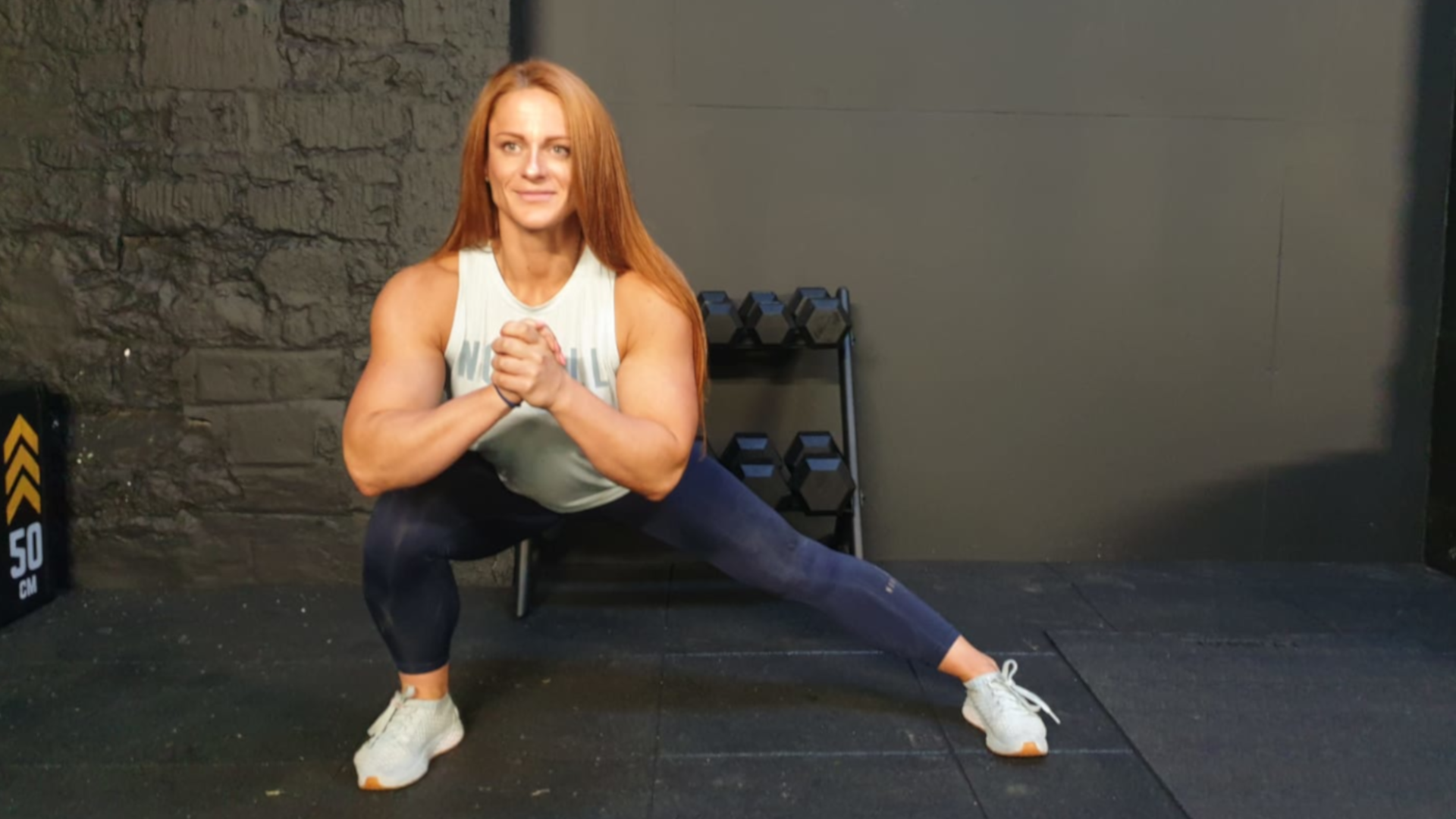Five squat variations you haven’t heard of for stronger legs and glutes
Have you heard of a shrimp squat?


Whether it’s using your bodyweight, an Olympic barbell or a pair of dumbbells, squats are one of the best compound exercises for building strength and size in our lower body. “ The squat packs a punch that other exercises struggle to rival are great for developing the size and strength of your glutes, quads, thighs, calves, hamstrings and core all in one movement," says Mark Bohannon, Certified Personal Trainer at Ultimate Performance.
But, despite their popularity, squats are a bit of a marmite exercise, you either love them or hate them. “Some people struggle with the classic back squat because they have long femurs and short torsos, so they typically have to bend over much more to keep the bar in line with the middle of the foot," says Mark. "For others, range of motion and flexibility in the knees is a problem, which can make it difficult to get parallel to the floor.”
You don’t have to rule out squatting completely though, as there are plenty of variations that will help you build strength and size in your legs and glutes. So, next time they pop up in your session, or if you’re simply looking to switch up your regular squats, try adding one of these into your lower body day instead.
1. Spanish squat

If you're looking for a serious quad burner, try Spanish squats. This squat variation uses a strong resistance band and while it's hard enough using this alone, you can also hold a single kettlebell or a dumbbell, to make it even harder. It requires you to sit into a narrow squat with a very upright torso. It may sound simple but, trust us when we say your quads will be on fire and your core strength will be put to the test.
How you do it:
- If you’re in a gym, take your strong, thick resistance band and loop it around a squat rack. If you’re at home, loop it around a very stable object.
- Place one foot into one loop of the band and your other foot into the other, then move the band to the top of your calves.
- Take a few steps backwards until there’s tension in the band (make sure there is enough, if there isn’t, you will fall over during the movement).
- With your feet hip-width apart, slowly squat down, focusing on sitting backwards and instead of letting your knees go over your toes, keep them vertical with your back completely straight – no leaning forwards!
- Come back up, repeat for 10 to 15 reps.
Tip: If you find yourself losing balance throughout the movement, just take a few more steps back. The more tension created in the band, the easier the movement.
2. Cossack squat

The Cossack squat is a single leg squat variation that’s brilliant for your quads, glutes, hamstrings and improved range of motion. It’s actually quite similar to a side lunge and it can be performed using your bodyweight, holding a dumbbell or kettlebell (although we advise mastering the movement first, before adding any additional resistance).
Get all the latest news, reviews, deals and buying guides on gorgeous tech, home and active products from the T3 experts
How you do it:
- Start with your feet nice and wide, standing tall (you may need to adjust your stance slightly throughout the movement) and pick up your weight holding it to your chest.
- Next, shifting your weight to one side, squat down as far as you can go (like a side lunge, but deeper), while keeping both feet planted to the floor.
- Push through your bent leg to get yourself back to the starting position, then repeat this movement on the other side (don't bring your foot back to centre like you would with a lateral lunge, keep a wide stance).
- Do this for 10 to 15 reps.
3. Prisoner squat

A prisoner squat is a great bodyweight squat and is an ideal strength exercise to do at home. It’s more challenging than your regular squat as you’re required to place your hands on the back of your head, which demands more core strength to stay stable and upright.
How you do it:
- Get into a squat position (feet slightly wider than hip-width apart, toes turned slightly out and stand tall).
- Place your hands behind your head, so your elbows point out to the sides.
- Lower down into your squat, sitting your bum back and pushing your knees outwards, like you're trying to sit on an imaginary seat behind you.
- Once your thighs are parallel or just below your hip crease, pause at the bottom, then push through your feet back to starting position.
4. Anderson squat

Anderson squats are ideal if you’re trying to master your regular squats, but struggle with the concentric portion of the lift — so when you’re trying to come back up. You will need a squat rack for this exercise and a barbell, so it’s best suited for a gym.
How you do it:
- Set the squat rack safety bars to around where your shoulders would be when squatting.
- Place the barbell across the safety bars and add on any weight plates.
- Get yourself into a squat position underneath the bar, with it lying across your traps.
- Brace your core, push through your heels and stand up with the bar.
- Lower the barbell back down onto the safety bars and repeat for your reps.
5. Shrimp squat

If you’ve always wanted to master a pistol squat, but struggled, then a shrimp squat may be more achievable (albeit it's still hard). Like a pistol squat, the shrimp squat requires you to squat down on one leg, but instead of having the other leg extended out in front of you, you have it curled behind you and the aim is to get your knee to touch the floor. It targets the quads and requires very good ankle, knee and hip mobility.
How you do it:
- Standing tall, lift one leg behind you and hold onto your ankle.
- Reach your other arm straight ahead to maintain balance and slowly begin to bend your knee.
- As you lower further towards the floor lean forwards slightly.
- Once your rear knee touches the floor, push through your foot to stand back up

Bryony’s T3’s official ‘gym-bunny’ and Active Staff Writer, covering all things fitness. She is a certified personal trainer and also a part-time fitness instructor. In her spare time, you will find her in her natural habitat - the gym - where her style of training is a hybrid of bodybuilding and powerlifting. Bryony loves writing about accessible workouts, nutrition and testing innovative fitness products that help you reach your fitness goals and take your training to the next level.